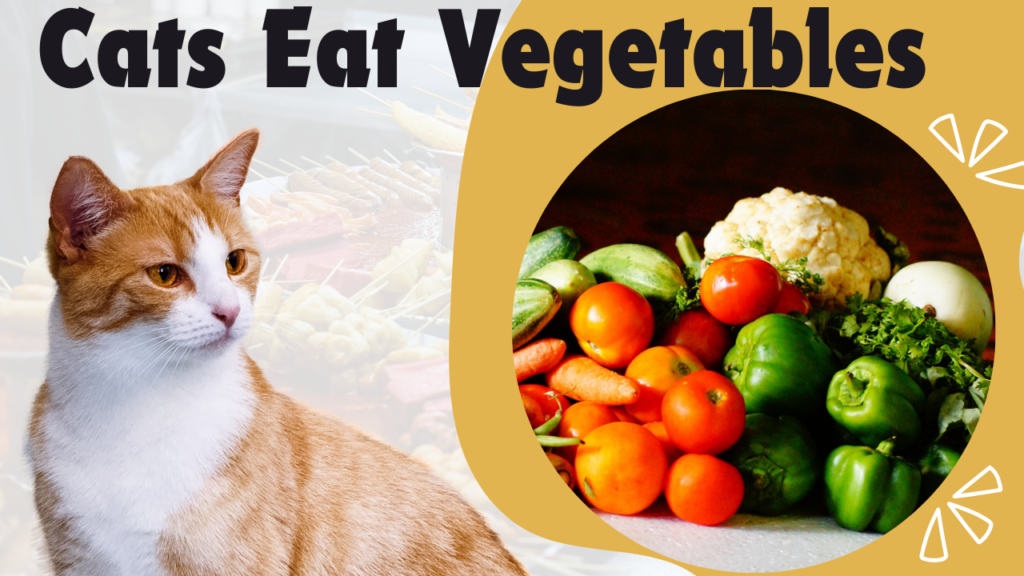Cats are unique creatures, revered for their independence, agility, and mysterious demeanor. As obligate carnivores, their dietary needs differ significantly from omnivores or herbivores. When it comes to feeding your feline friend, questions about including vegetables in their diet often arise. In this article, we explore whether cats should eat vegetables, the potential benefits, risks, and how to incorporate them safely into your cat’s meals.
Understanding a Cat’s Natural Diet
Cats are obligate carnivores, meaning their bodies are biologically designed to thrive on a diet primarily composed of animal-based proteins and fats. Unlike omnivores, such as humans or dogs, cats rely heavily on nutrients found only in animal tissues, such as taurine, arachidonic acid, and vitamin A. These essential nutrients cannot be synthesized efficiently by a cat’s body, making a meat-based diet crucial for their survival.
Do Cats Need Vegetables in Their Diet?
The short answer is no, cats do not need vegetables for their primary nutritional needs. However, incorporating small amounts of vegetables can provide certain benefits. Vegetables are rich in fiber, vitamins, and minerals that may support digestive health, enhance hydration, and offer an occasional low-calorie treat. Yet, these benefits are secondary to the core nutrients cats obtain from meat.
Potential Benefits of Vegetables for Cats
- Improved Digestive Health
Fiber-rich vegetables, such as pumpkin or zucchini, can help regulate a cat’s digestive system. If your cat suffers from constipation or diarrhea, a small amount of pureed vegetable may provide relief. - Weight Management
For overweight cats, vegetables can serve as low-calorie fillers, offering a satisfying snack without adding significant calories. This can help in weight control while maintaining satiety. - Hydration Boost
Many vegetables, like cucumbers or celery, have a high water content. These can contribute to your cat’s overall hydration, especially for cats that don’t drink enough water. - Vitamin and Mineral Supplementation
While not essential, vegetables such as spinach (in moderation) can provide beneficial nutrients like vitamin C, vitamin K, and magnesium.

Risks of Feeding Vegetables to Cats
- Digestive Issues
Cats possess relatively shorter digestive systems when compared to herbivores and omnivores. This makes them less efficient at breaking down plant-based foods. Feeding excessive amounts of vegetables can lead to gas, bloating, or diarrhea. - Toxicity
Not all vegetables are safe for cats. Onions, garlic, chives, and leeks are toxic and can cause severe health issues, including anemia. Always research before offering a new vegetable to your pet. - Allergies or Intolerances
Some cats may have allergies or intolerances to specific vegetables.It is crucial to introduce new foods gradually while closely observing for any adverse reactions. - Nutritional Imbalance
Over-reliance on vegetables can lead to nutritional deficiencies. Cats need a balanced diet with adequate levels of taurine, protein, and fats to maintain optimal health.
Safe Vegetables for Cats
If you decide to offer vegetables to your cat, ensure they are safe and prepared correctly. Here is a list of cat-friendly vegetables:
- Pumpkin
Pumpkin, rich in fiber, is highly effective in relieving both constipation and diarrhea. Serve it cooked and pureed for easy digestion. - Carrots
Rich in beta-carotene and vitamin A, carrots can be a healthy snack when cooked and mashed to avoid choking hazards. - Zucchini
A low-calorie option, zucchini provides hydration and mild fiber content. Prepare it by steaming and cutting it into small, manageable pieces. - Green Beans
Packed with fiber and vitamins, green beans can be a satisfying treat, especially for overweight cats. - Spinach
Spinach is nutrient-dense but should be given in moderation, as excessive amounts can cause calcium oxalate buildup, leading to urinary issues. - Cucumber
High in water content, cucumber is an excellent option for hydration. Slice it thinly to make it easier for your cat to eat.
How to Introduce Vegetables to Your Cat’s Diet
- Start Small
Begin with tiny portions to gauge your cat’s reaction.Keep an eye out for any symptoms of digestive discomfort or allergic responses. - Cook Thoroughly
Raw vegetables are difficult for cats to digest. Steam or boil vegetables to soften their texture and enhance digestibility. - Avoid Seasonings
Never add salt, butter, or spices to vegetables intended for your cat. Such additives may pose a risk to your cat’s health. - Mix with Regular Food
To encourage acceptance, mix pureed or finely chopped vegetables with your cat’s regular wet or dry food. - Monitor Health
If you notice any adverse effects, such as vomiting, diarrhea, or lethargy, discontinue feeding the vegetable and consult your veterinarian.
When to Avoid Feeding Vegetables
There are certain situations when vegetables should not be part of your cat’s diet:
- Underlying Health Issues: Cats with kidney disease or urinary problems may require a specialized diet, and some vegetables can exacerbate their condition.
- Food Sensitivities: If your cat has known allergies or intolerances, avoid introducing new vegetables without veterinary guidance.
Alternatives to Vegetables
If you are looking for dietary variety or specific health benefits, consider these alternatives:
- Cat-safe fruits: Small portions of fruits like blueberries or cantaloupe can be offered occasionally.
- Commercial cat treats: Choose high-quality, meat-based treats that align with your cat’s carnivorous needs.
- Supplements: Veterinary-approved supplements can help address specific deficiencies without compromising your cat’s diet.
Conclusion
While vegetables are not a necessary component of a cat’s diet, small amounts of safe, properly prepared vegetables can provide secondary health benefits. Always prioritize a meat-based diet to meet your cat’s essential nutritional needs, and consult your veterinarian before introducing new foods. With proper care and attention, you can enhance your cat’s diet in a way that supports their health and happiness.
# : READ ANOTHER POSTS
1 : How to Measure Your Cat’s Heart Rate While Purring: A Comprehensive Guide
2 : Can Cats Eat Donuts? A Guide to Feline Nutrition and Health Risks
3 : Is Raw Broccoli Good for Cats
4 : Understanding the Heat Cycle in Female Cats: A Comprehensive Guide


